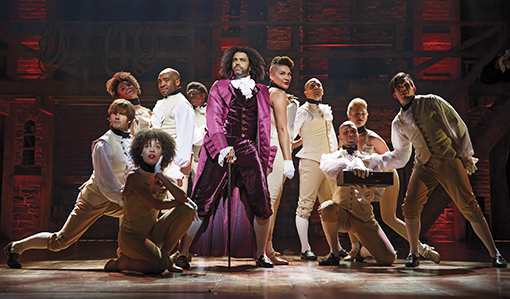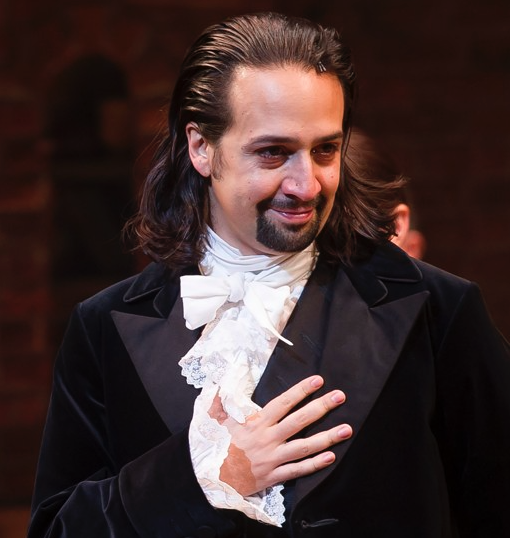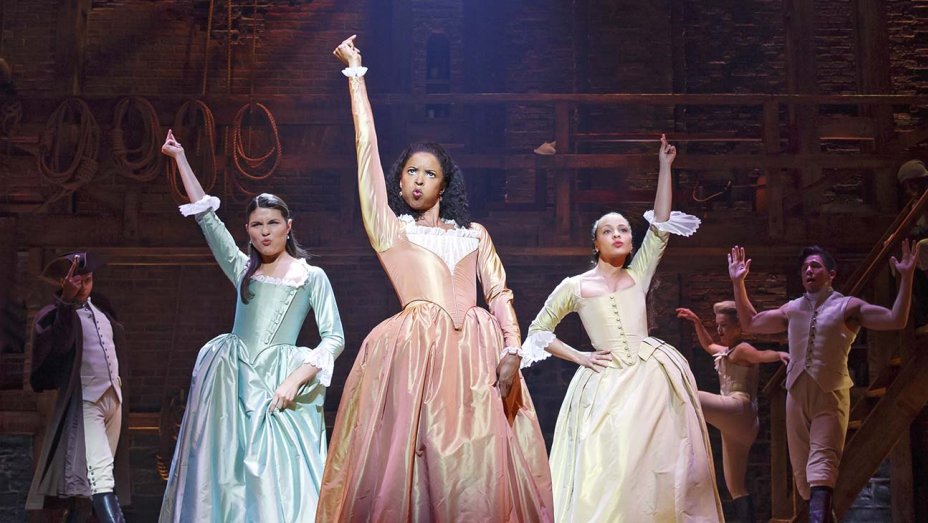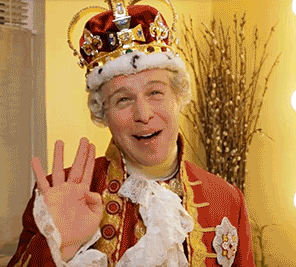by Eric Blume

Disney+ made a shrewd and smart move by releasing the filmed-stage movie musical Hamilton over the July 4 weekend, at a time when the country really needs it. The themes and ideas of this Pulitzer Prize-winning theater phenomenon from five years ago seem even more relevant and powerful than they did upon arrival, and the movie version, which debuted this weekend, is a stage capture of the principal original Broadway cast, edited together from three live performances filmed in June 2016.
Filmed versions of staged material always have their limitations: one can never capture the visceral pump of energy that’s happening in the Richard Rodgers Theater before and during a performance of this show in particular. As such, the Hamilton movie ultimately succeeds best in preserving an unbeatable group of actors in the biggest show of this century, exactly as the original creators intended it to play...
 Thomas Kail, who directed the stage version with breathtaking imagination and laser focus, serves as the movie’s director as well. Kail knows what he’s doing behind a camera: he directed five of the eight episodes of FX’s Fosse/Verdon with control and style, guiding his now-girlfriend Michelle Williams to the all-time best performance of her career. He’s placed cameras across many areas of the stage, and he’s coached his actors to be at the height of their powers (each one literally tears into each number with electrifying force). Where the movie falls apart, here and there, is in the editing.
Thomas Kail, who directed the stage version with breathtaking imagination and laser focus, serves as the movie’s director as well. Kail knows what he’s doing behind a camera: he directed five of the eight episodes of FX’s Fosse/Verdon with control and style, guiding his now-girlfriend Michelle Williams to the all-time best performance of her career. He’s placed cameras across many areas of the stage, and he’s coached his actors to be at the height of their powers (each one literally tears into each number with electrifying force). Where the movie falls apart, here and there, is in the editing.
The first two numbers out of the gate, the intro song and the famous “My Shot”, contain a colossal amount of narrative, introducing key characters, complex relationships, time and place in a way that sets up a context for what’s to come. The editing does the audience no favors here. If you’re coming into Hamilton cold, you’d be hard-pressed to find your bearings, because there are limited medium and close-up shots here. The editing finally starts to come together with the show’s third number, “The Schuyler Sisters” which introduces the female characters with a clarity we haven’t seen before.
Filming and editing this movie could not have been easy: in addition to the typical challenges that come with filming stage material, the set contains a double(!) turntable, which makes editing a particular challenge, as you’re not set up for success for match shots, and Kail’s original direction of the show is so meticulous, so full of constant large-scale tableau, that you need to see wide shots as often as possible to get a sense of the full stage picture. So the film sometimes finds a good balance between its intimate shots and its other locked-off wides, but other times the editing between its shots does not help the storytelling.
Sound is another challenge for this film, as composer Lin-Manuel Miranda has written this piece with a full-on assault of verbal wordplay and fast-driving hip-hop patter, and swaths of information (and characterization, and history) come at you from character after character. The sound mix for the movie isn’t great, and this is where the editing could have further helped. In short, one of the most thrilling things about seeing Hamilton onstage is that Miranda really makes you listen, with great intensity, and the engagement of your senses is so high. You find yourself literally leaning into the stage, which could have been mirrored with more medium and close shots. Film obviously has different technical components to tell us how to listen, where we should focus, and how the story is told. There are moments throughout Hamilton the movie where it probably would have benefitted to have done a few more set-up shots without an audience present to nail down a few more tight shots that could have helped the storytelling. In defense of the editing, though, none of the show is chopped up or made to look like a music video. Ultimately, the editing preserves the integrity of the staging so this was a minor quibble.
At the end of the day, we have here the definitive Hamilton, and how often do we get a record of such things? Hamilton is incredibly dense, and preposterously ambitious, and what’s preserved here is the unity of vision: the text, the music, Paul Tazewell’s inventive costumes, Andy Blankenbuehler’s amazing and original choreography…all of the elements are a blend of period and contemporary, realistic and stylized, all in the same fashion, mirroring and supporting each other. This is artistry of the highest, highest level, and it releases the actors to give intense and inspired performances.
Leslie Odom, Jr. creates a complex and moving Aaron Burr. His singing and acting are both exhilarating. Nothing he’s done since (yet) has captured the intelligence, bravado, and mastery he displays here. As his foil, Miranda hasn’t ever received enough credit for his acting contribution to the show: he keeps everything simple and true, with a nice undercurrent of rage, and a keen instinct to nail every bit of funny possible.

Tony winner Renée Elise Goldsberry takes the relatively small role of Hamilton’s sister-in-law and goes balls to the wall with it. She provides possibly the high point of the show, her number “Satisfied”, where we see a previous scene from her point of view. Kail’s staging of this number, which takes place largely in literal reverse, was jaw-dropping onstage, and while we don’t get a perfect sense of that here, the veracity and force of Goldsberry’s singing and acting is unparalleled.
Fellow Tony winner Daveed Diggs isn’t helped as much by the camera's framing as Goldsberry, but his humor, resourcefulness, and finesse are in splendid form, and Phillipa Soo’s singing as Eliza Hamilton is exemplary. Christopher Jackson’s impressive balance of swagger and rueful sadness come alive on film.

And of course Jonathan Groff, in his small recurring role as King George, couldn’t be funnier. Groff has a gift of being able to play both broad and small at the same time; his gigantic voice wraps itself around his Elton John-like trio of musical interludes with seeming effortlessness. It's hard to imagine anyone else wringing more confident comedy from the material.
It’s a major work of art, a bold, imaginative, challenging piece of theater, enshrined here in its rhapsodic joy and sorrowful tragedy. It’s incredibly rare to have this many extraordinarily talented people capture lightning in a bottle, a group with aspirations this high and the collaborative skills and generosity to bring everything together. There were moments where my heart was soaring so loftily I could barely contain my happiness. Hamilton the show is an A+, and Hamilton the movie rates at least an A-. This Hamilton, right now, is such a gift.